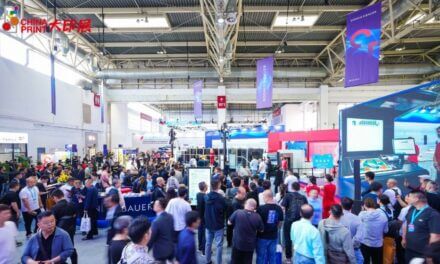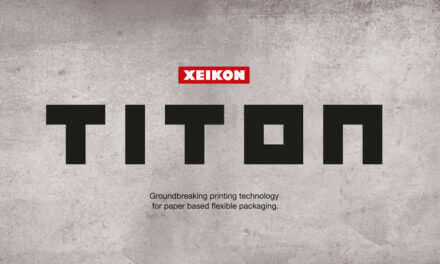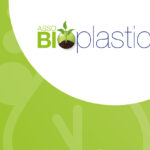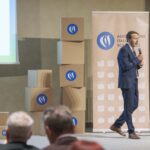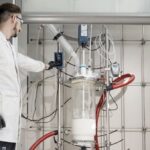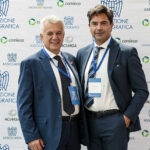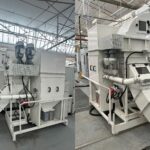Compostability and recyclability, alternative routes to the sustainability of polymeric and cellulosic based packaging. Effectiveness and limits of the two approaches, and industry proposals: from Sun Chemical R&D the state of the art in the field of adhesives.
In recent years we have witnessed the growing attention of the population and the media towards plastic, and even more towards flexible plastic packaging as a polluting factor on the planet. However, this awareness does not take into consideration the positive role played by plastic packaging. Furthermore, people are generally unaware that the continuous developments of the technology have enabled reductions in thickness (and therefore in weight) of packaging, without compromising the mechanical and barrier properties that guarantee the shelf life of the packaged product, thus reducing both the consumption of the resources required to make the packaging as well as food waste. A correct approach to the problem, therefore, goes forst of all by way of informing and educating the population, starting from primary schools, on the functions and the correct use of flexible plastic packaging and on the need for a correct, daily segregated collection of packaging that has reached the end of its lifecycle. In addition, of course, to an empowerment and improvement of the packaging waste collection and recycling system. Having clarified this, much can and must still be done to make flexible packaging more sustainable. Substantial progress in this direction is also urgently requested by the user industry, which interprets the demands of civil society, urging the entire supply chain to mobilize in this direction.
Two roads that lead to sustainability
The term sustainability referring to flexible food packaging is a big “umbrella” that refers to multiple aspects of the problem and to different solutions – not always bearers of innovation. For example, one can correctly define the replacement of an adhesive based on organic solvents with a water-based or solvent-free system as sustainable; in this case, however, while moving in the right direction, we are talking about developments that are now over 20 years old, and therefore not “innovative”. In this article I wish to focus on the two main orientations of the market in search of sustainability, and on the innovative solutions implemented by Sun Chemical with the SunLam brand in the field of lamination adhesives, to respond to the different needs of users (converters). In my opinion, today those who speak of sustainable packaging generally mean that it is compostable or recyclable (and hence monomaterial). Before introducing the new goals achieved by Sun Chemical, I would like to analyze what the two terms mean, and the advantages and limitations of each type of solution.
Compostability: problems and solutions – General problems
First of all, we must point out that here we are referring to industrial compostability that, to obtain the compost, requires the implementation of particular conditions of treatment of the packaging. A first criticality becomes immediately evident: in addition to a system of segregation, collection and special treatment for these packaging, correct information for the consumer is also necessary to avoid the (widespread) idea that a compostable package biodegrades spontaneously – and in a reasonable time – if left in the environment. Another critical issue is economic. To date, the orientation to “redesign” the current plastic packaging by using industrially compostable materials is slowed down mainly by the fact that, on average, compostable substrates cost more than traditional plastics. However, considering that new suppliers of compostable substrates are entering the market, it is hoped that this difference, probably justified by the actual higher cost of raw materials and production processes, will be reduced, facilitating the application of this type of solution. Lastly, a due mention goes to the gas barrier properties (O2 and MWTR), which are essential for prolonging the shelf life of packaged products and which are not automatically guaranteed by compostable materials. I anticipate, on this count, that to solve the problem new functionalized compostable substrates or other solutions developed in Sun Chemical are being proposed, such as, for example, barrier lacquers.
Water or solvent: for and against
Coming to the adhesives to be used for the production of “industrial compostable” laminates, two main product technologies are currently on the market: solvent based and water based. The water based technology, available in the Sun Chemical catalogue under the trade name Compost Lam Part A+B, has the obvious advantage of eliminating the solvent. Its main criticality, a function of the high surface tension of water, manifests itself with distension/wettability problems on some compostable substrates, which also affect the development of the correct mechanical properties. On the other hand, this technology finds an excellent use in the production of compostable, paper-based laminates. In addition to not being completely “sustainable” due to the presence of organic solvents in the product, solvent-based products are penalized by the lower thermal resistance of the compostable polymer to challenging thermal processes such as, typically, pasteurization (95 ° C). They however, above all reveal problems related to the use of compostable substrates sensitive to organic solvents (for example PLA), which emerge both at the application level and as a possible solvent retention on the finished packaging.
Sun Chemical’s latest development
On the basis on what has been described above, SunChemical/DIC has developed a prototype of an industrial solvent-free compostable adhesive, called EXP 100 + 306, which requires a low application temperature on laminating machines and has an optimal rate of viscosity and a correlated great stability between the application cylinders. These properties make it the ideal solution for the production of industrial compostable films, even at high speed, in order to increase productivity and therefore reduce the overall costs of this solution. The Sun Chemical adhesive also simplifies the life of the operators during machine cleaning, thanks to the aforementioned stability of the product between the cylinders.
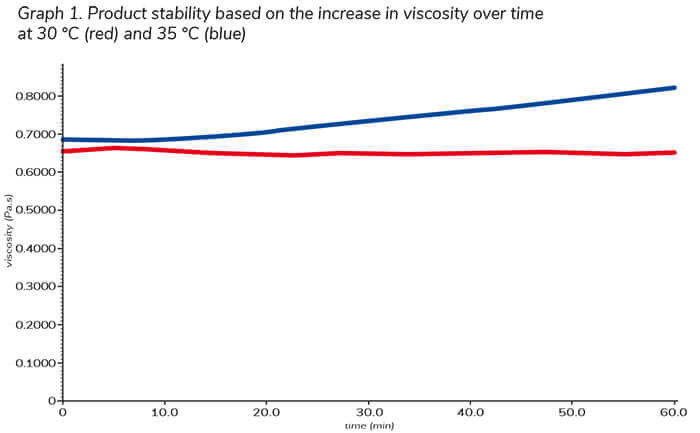
Lastly, the EXP 100 + 306 adhesive system has important properties in view of the safety of operators and consumers, which is one of the primary objectives of all Sun Chemical projects. In particular, this product has a monomeric residue of less than 0.1%; for this reason it is in fact exempt from the risks normally associated with the use of isocyanates, and ensures excellent compatibility with all the main compostable films on the market, which often have higher additives than traditional plastic films.
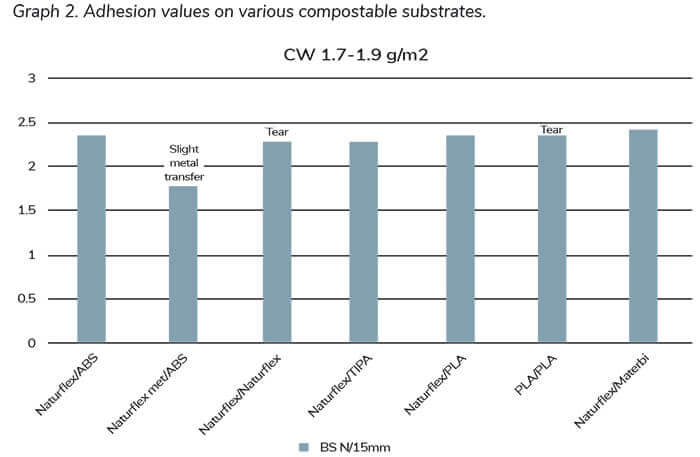
Recyclability, that is: the single-material structures
The trend linked to the production of single-material laminates is quite recent and mainly refers to packaging structures based on 100% polyolefin. This homogeneity simplifies the identification during pre-recycling sorting and, consequently, improves its recyclability compared to laminates made of materials of different nature. Until now, the use of multi-material laminates was linked to the need to give packaging mechanical (stiffness, weldability, puncture resistance, etc.) and barrier (to light, gases such as oxygen, water …) properties to adequately protect the packaged product. The effectiveness of these structures is proven but limited, in terms of environmental sustainability, by the known difficulties of disposal. The “single material” alternative solves this problem; furthermore, its realization is facilitated by the high availability of polyolefin substrates at costs not too different from multi-material systems. However, compared to them, it may present a deficiency of barrier characteristics: the single-material laminate, in fact, show discrete water vapor barrier (MWTR) but a poor oxygen barrier (OTR) performance properties.
The answer is solvent based
In this light, Sun Chemical/DIC has developed a solvent-based adhesive system under the Paslim brand VM001 + 108CP, with an oxygen barrier function. This product is used like a traditional solvent-based adhesive system in terms of drying and lamination temperatures, and speed. Furthermore, it produces an improvement in the oxygen barrier (OTR) properties – which is irrelevant to the percentage of relative humidity which instead represents a problem in the EvOH-based coating or coextrusion – and is suitable for thermal and chemical resistance processes. But there is more: although solvent based, this adhesive fulfills the most stringent food regulations as it is free from epoxy resins and epoxy silane; it is characterized by a low viscosity; it is suitable for high solid applications (50-55%); therefore it reduces the use of organic solvents (VOC) during the preparation of the mixture, as per the dilution table below.
A limit and its overcoming
Having said that, we must also point out that the PASLIM adhesive is not a “complete barrier” system as would be a PVdC or similar lacquering. Hence its use and application requires a partnership between Sun Chemical and the converter to define the appropriate structure of the laminate with the aim of obtaining the desired oxygen barrier level or that comparable to the analogous multi-material structure. Specifically, this could be achieved with the use of “functionalised” polyolefin substrates such as AlOx or SiOx or metallized lacquering. Here the use of the PASLIM barrier adhesive finds its place to prevent or reduce the problem of the cracking of the aforementioned coatings/metallizations, which can be produced in the printing, laminating and packaging phase, depending on its high flexibility and flex crack resistance.

Conclusion
Ultimately, a correct partnership with the converter in identifying the structure of the laminate, using the PASLIM barrier adhesive, enables barrier performance to be achieved in monomaterial structures comparable to current multi-material structures. However, the aspect relating to the mechanical properties of monomaterial structures remains to be examined, and in particular that related to packaging machines: they must be carefully evaluated to obtain the same characteristics of integrity and tenacity of the welding, the welding temperature (packaging speed), resistance to the welding temperature, which must be as close as possible to those obtained with multi-material laminates. In this perspective, resin and film producers are developing new solutions related to both the process phase and the substrate functionalization to improve the mechanical aspects described above.



